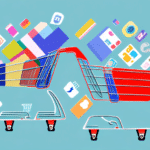Understanding the Concept Behind Customer Retention Programs
In the world of business, customer retention is often the key to long-term success. While attracting new customers is important, retaining the ones you have is even more vital. This is where customer retention programs come into play. This article delves into the concept of customer retention programs, explaining why they matter, the benefits of implementing them, and the key elements of a successful strategy. We will analyze customer data, share tips for strengthening customer relationships, and explore the role of personalization in retention. Additionally, we discuss ways to use social media to increase retention rates, along with how to balance acquisition and retention. We touch on common mistakes to avoid and review methods for measuring program effectiveness. Finally, we provide case studies of successful customer retention programs and examine future trends to watch for.
Importance and Benefits of Customer Retention
Why Customer Retention is Vital for Business Success
Customer retention is critical for businesses of all sizes. It costs much more to acquire new customers than to keep existing ones. A report by Bain & Company found that increasing customer retention rates by 5% can increase profits by 25-95%. Furthermore, repeat customers are more likely to recommend your business to others, and they tend to be less price-sensitive. They trust your brand and have already had positive experiences working with you. From a business standpoint, customer retention is simply good business sense.
However, customer retention is not just about financial benefits. It also helps to build a loyal customer base, which can be a valuable asset for any business. Loyal customers are more likely to forgive mistakes and give constructive feedback, which can help businesses improve their products and services. They can also become brand advocates, promoting your business through word-of-mouth and social media. By focusing on customer retention, businesses can create a community of loyal customers who are invested in the success of the business and are more likely to stick around for the long term.
The Benefits of Implementing a Customer Retention Program
Implementing a thoughtful and strategic customer retention program can help businesses reap many benefits. One of the most prominent benefits is that such programs can help you keep your current customers happy and engaged. Additionally, retention programs can help build strong relationships with your customers that lead to long-term brand loyalty. Loyal customers not only purchase more frequently, but they can be strong advocates for your brand. Strong retention programs can also present opportunities to upsell and cross-sell products or services.
Another benefit of implementing a customer retention program is that it can help reduce customer churn. By keeping your customers engaged and satisfied, they are less likely to switch to a competitor. This can save your business money in the long run, as acquiring new customers can be more expensive than retaining existing ones.
Furthermore, a customer retention program can provide valuable insights into your customers' needs and preferences. By tracking their behavior and interactions with your brand, you can identify areas for improvement and tailor your products or services to better meet their needs. This can lead to increased customer satisfaction and loyalty, as well as a competitive advantage in your industry.
Developing a Successful Retention Strategy
The Key Elements of a Successful Customer Retention Strategy
Creating an effective customer retention program involves multiple key elements. Firstly, it’s important to focus on the right customers— not all customers are created equal. Data analysis can help you identify which customers are most valuable, and therefore, which ones you should prioritize in your retention efforts. Additionally, having clear goals and a well-defined strategy is vital. Identify the methods you’ll use to engage customers and track progress throughout the process. Communication is also key to a successful customer retention program. Regular communication to show customers that you value their business is crucial.
Another important element of a successful customer retention strategy is personalization. Customers want to feel like they are more than just a number to your business. By personalizing your communication and offers, you can make customers feel valued and appreciated. This can include personalized emails, special offers based on their purchase history, or even personalized product recommendations. Additionally, providing excellent customer service is crucial for retaining customers. Responding promptly to customer inquiries and resolving any issues they may have can go a long way in building customer loyalty.
Common Mistakes to Avoid in Your Customer Retention Program
Like any business strategy, there are common pitfalls to avoid when implementing a customer retention program. One of the most significant mistakes is not tracking relevant data. Data is key to understanding customer behavior and identifying issues. Additionally, failing to personalize your communication or rewards can feel impersonal and ineffective. Finally, failing to regularly review and analyze your program's performance can result in missed opportunities for improvement.
Enhancing Customer Relationships
Tips for Building Strong Customer Relationships
Building strong customer relationships is a key factor in retaining customers for the long term. One of the most critical elements in relationship building is communication. Regular communication demonstrates that you value your customers and are invested in their experience. Going above and beyond to create personalized experiences for them is also important. Delighting your customers by offering them unexpected rewards or personalized interactions can go a long way in boosting loyalty. Finally, offering excellent customer service is non-negotiable. When customers feel heard and valued, they’re more likely to stick around long term.
Another important aspect of building strong customer relationships is being responsive to their needs. This means actively listening to their feedback and addressing any concerns or issues they may have. It also means being flexible and adaptable to their changing needs and preferences. By being responsive, you show your customers that you are committed to meeting their needs and providing them with the best possible experience.
In addition, building trust is crucial for developing strong customer relationships. This can be achieved by being transparent and honest in your interactions with customers. It also means following through on your promises and commitments. When customers trust you, they are more likely to continue doing business with you and recommend your products or services to others.
Utilizing Data and Personalization
Analyzing Customer Data to Improve Retention Rates
Data is at the heart of any effective retention program. It’s important to track and analyze data to fully understand customer behavior, preferences, and purchasing habits. By analyzing this data, you can pinpoint opportunities to offer personalized experiences to each customer, improving the likelihood that they will remain loyal. Additionally, data analysis can help you identify customers who may be at risk of leaving, giving you the opportunity to intervene and retain them.
One key aspect of analyzing customer data is understanding the customer journey. By mapping out the various touchpoints a customer has with your brand, you can identify areas where they may be experiencing friction or frustration. This information can then be used to improve the overall customer experience, making it more seamless and enjoyable for the customer.
Another important use of customer data analysis is in predicting future behavior. By looking at past purchasing patterns and other behaviors, you can make informed predictions about what a customer is likely to do in the future. This can help you tailor your marketing and retention efforts to each individual customer, increasing the chances of success.
The Role of Personalization in Customer Retention
Personalization can play a crucial role in retaining customers. Customers today are looking for personalized experiences that cater to their specific needs and desires. Personalization can include anything from targeted offers that are tailored to a customer’s specific interests, to customized communications that acknowledge past purchases or interactions. By offering a personalized experience, you can make customers feel valued and more likely to remain loyal to your brand for the long term.
Implementing Loyalty Programs and Social Media Strategies
Creating a Loyalty Program that Works
Loyalty programs can be highly effective when designed thoughtfully. Some of the most successful loyalty programs offer clear rewards that are easily attainable. Additionally, allowing customers to choose their rewards can give them a greater sense of satisfaction. Personalizing the rewards based on a customer's purchasing habits or preferences can also add extra value. Finally, make it easy for customers to redeem rewards and keep track of what they’ve earned.
How to Use Social Media to Boost Retention Rates
Social media is an effective tool for engaging and retaining customers. It provides a platform for customers to interact with your brand in real-time and creates opportunities for communication and relationship building. Social media offers many opportunities to show your customers that you value their business. For example, you can use social media platforms to offer exclusive discounts or promotions to your followers. Additionally, social media provides a way to showcase your brand's personality and unique voice, making a strong impression in the minds of your followers.
Balancing Acquisition and Retention Strategies
Retention programs are just one piece of the puzzle when it comes to building a strong business. A balance of both acquisition and retention strategies is critical. Your acquisition strategies should focus on attracting new customers, while retention strategies should focus on keeping the customers you already have happy and engaged long-term. When you have a solid balance between acquisition and retention, your business can thrive and grow.
Measuring and Improving Retention Programs
Measuring the Effectiveness of Your Customer Retention Program
Measuring the success of your customer retention program is essential to its ongoing success. The right KPIs will depend on your specific program, but they should measure customer satisfaction, engagement, and retention rates. Additionally, tracking customer feedback and testimonials can provide insights into customer perceptions of your brand and your program. Continuously measuring and tweaking your customer retention program's performance will help you adapt and improve over time.
Case Studies and Future Trends
Case Studies: Successful Customer Retention Programs in Action
There are many examples of businesses that have developed successful customer retention programs. For example, American Express offers a loyalty program that rewards customers for using their card regularly. The program targets customers with tailored perks and benefits, based on their past purchase history. Sephora is another excellent example of a successfully implemented retention program. Its Beauty Insider program frequently offers exclusive discounts and promotions, in addition to beauty samples personalized to a customer's unique preferences.
Future Trends in Customer Retention: What to Expect
As we look to the future, there are several trends in customer retention that businesses should watch for. One notable trend is the rise of artificial intelligence. AI-powered chatbots and personalized experiences can help improve customer communication and engagement. Additionally, many businesses are looking to offer more subscription-based services, providing long-term benefits to customers and creating more predictable revenue streams. Finally, as customers become increasingly tech-savvy, businesses will need to find new ways to engage customers on the platforms they prefer, whether that's social media, mobile apps, or other channels.
In conclusion, effective customer retention programs are a key component of building a successful business. By focusing on implementing the right strategies, analyzing customer data, and creating personalized experiences for your customers, you can increase customer satisfaction and drive long-term loyalty.






















